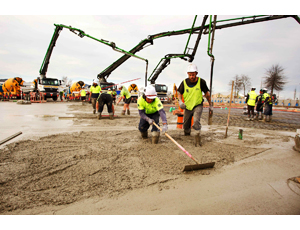

Four years after the earthquakes that devastated Christchurch, New Zealand’s oldest and most populous South Island city, the country's Canterbury region faces a long and difficult road to recovery.
Despite a steep migration-led population growth and near-record labor force participation rates boosting worker supply, skill shortages in construction remain acute in the region and throughout New Zealand.
At a conservative estimate, it will cost more than $30 billion to rebuild the quake-damaged area. For a country with a population topping just 4.5 million, and a workforce largely unprepared to respond to reconstruction on such a scale, the task has tested to their limits the country’s immigration policy and the ingenuity of government and construction officials.
Kevin Everett, managing director of Building Recruitment in Auckland, says government is falling far short of doing enough to bridge the skills gap. “We need to get more people into the training process and speed up immigration,” he says. “As an agency we have clients who desperately need skilled workers across the whole spectrum, from white-collar engineers to trades such as concrete cutters, carpenters and carpet fitters.”
Everett says the problem has given rise to an alarming paradox. “There is a lot of effort being invested in encouraging offshore talent, but although companies may succeed in attracting it, projects can take a long time to get under way,” he says. “It can mean that contractors have to pay a premium for migrant workers doing nothing while waiting for projects to get the OK.”
Clive Baddeley, civil engineering manager at Smith Crane and Construction, agrees: “One of the biggest problems in Christchurch at the moment is the number of jobs that have been tendered and are not proceeding.”
Steve Baker, Christchurch branch manager for Enterprise Recruitment, says he wants to fill vacancies for highly qualified engineers with seismic design experience. He routinely targets the US West Coast for engineers with the relevant skills. “The industry needs the confidence to be able to offer the right financial incentives to the right skills wishing to come to New Zealand. It’s a lifestyle choice. But the industry is very controlled by a few large contractors.”
Expatriates are Returning
The Canterbury region, which bore the brunt of the quakes, is expected to show strong economic growth for the foreseeable future as rebuild investment continues.The latest Ministry of Business, Innovation and Employment figures show a strong rise in the level of rebuild-related visa arrivals in the last quarter of 2014.
The Philippines was the largest source of immigration for the rebuild, followed by workers from Great Britain and Ireland. New Zealand Economic Development Minister Steven Joyce says more than 50,000 skilled workers are needed across the country amid strong economic growth, many of them in construction.
Kiwi businesses are targeting skilled expatriates to return home. "We are seeing unemployment dropping," he says. "We have a much higher labor market participation so we are going to hit the buffers shortly in terms of available skilled workers."
Expat New Zealanders are returning, as the migration pattern across the Tasman Sea to Australia shifts into reverse, partially due to a weakening economy. Queensland is a prime target, being home to some 40% of the 600,000 plus Kiwis living in the country, and having suffered job losses in construction and mining across the state.
Since the first Canterbury earthquake in September 2010, salary and wage rates in the New Zealand construction sector have grown by 14.1%. Job vacancies show robust growth, but Canterbury has struggled to fill an extra 13,800 needed jobs in the last quarter of 2014, compared to the same period a year earlier.
Some $1.2 billion of construction work was estimated to have been completed during the quarter, and work is forecast to peak at close to $1.6 billion by the end of 2016. It will require 38,000 construction trades workers, around 8,000 more than estimated to be employed in September 2014; businesses are finding it difficult to source both skilled and unskilled workers.

Post a comment to this article
Report Abusive Comment